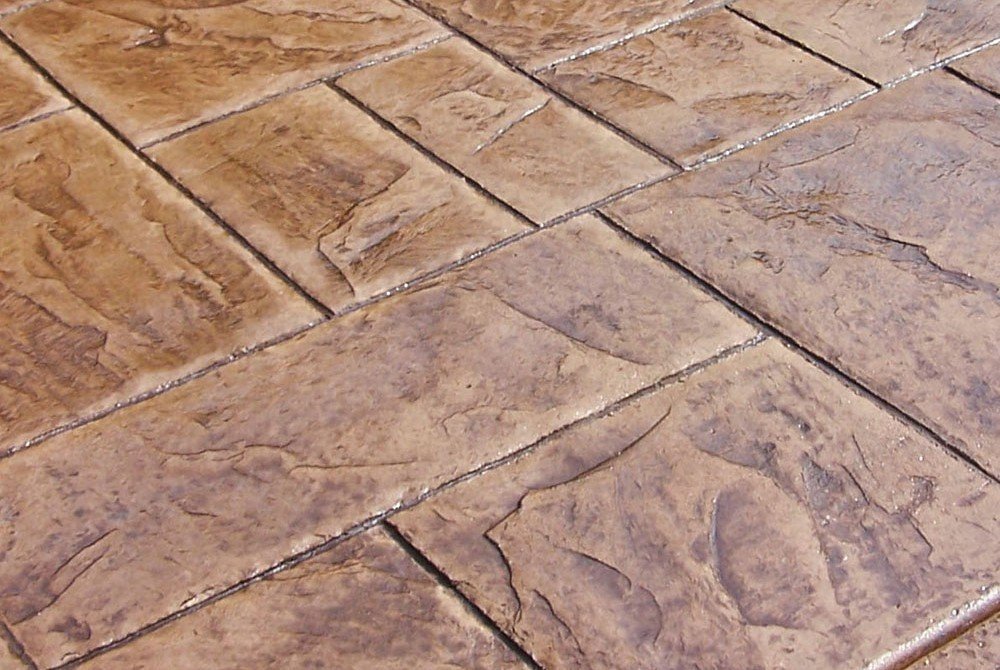Eco-Friendly Stamped Concrete offers a variety of advantages that not only benefit the environment but also enhance the overall quality of construction projects. One of the most significant benefits is its reduced carbon footprint. Traditional concrete production is energy-intensive and releases a substantial amount of carbon dioxide into the atmosphere. By utilizing recycled materials and sustainable production methods, Eco-Friendly Stamped Concrete minimizes environmental impact, making it a wonderful choice for eco-conscious builders and homeowners.
Another important advantage is durability. Eco-Friendly Stamped Concrete is designed to withstand the test of time. This means less frequent repairs and replacements, which ultimately lead to fewer resources being consumed over the lifecycle of the project. When you choose Eco-Friendly Stamped Concrete, you're investing in a solution that helps conserve natural resources and reduces waste.
In addition to sustainability and durability, Eco-Friendly Stamped Concrete can also enhance aesthetic appeal. With various stamping techniques and finishes available, this eco-friendly option can mimic the look of more expensive materials like stone or brick, offering beauty without the corresponding environmental cost. Homeowners and designers can achieve stunning results while making a responsible choice for the planet.
Moreover, using Eco-Friendly Stamped Concrete can lead to improved energy efficiency. Many eco-friendly concrete mixtures include components that provide better insulation properties, helping to maintain comfortable temperatures indoors. This not only reduces energy consumption for heating and cooling but can also lower utility bills, making it an attractive option for budget-conscious consumers.
Sustainable Materials for Construction
Sustainable materials are becoming increasingly important in the construction industry as we strive for greener building practices. When it comes to Eco-Friendly Stamped Concrete, using sustainable materials not only enhances the aesthetic appeal but also promotes environmental responsibility. Many construction professionals are now turning to recyclable and renewable materials that reduce the carbon footprint of their projects.
One popular sustainable material is fly ash, a byproduct of coal combustion that can be incorporated into concrete mixes. By using fly ash, builders can reduce the amount of cement needed, which is a significant contributor to greenhouse gas emissions. Additionally, other materials like slag cement and recycled aggregates provide excellent alternatives that improve the durability and strength of Eco-Friendly Stamped Concrete while minimizing waste.
Another innovative approach is the use of natural pigments for coloring stamped concrete. Unlike synthetic dyes that can be harmful to the environment, natural pigments are derived from minerals, clays, and even plant materials. This not only showcases the beauty of the concrete but also adheres to eco-friendly practices. When combined with sustainable practices like proper sealing and maintenance, Eco-Friendly Stamped Concrete can create long-lasting, environmentally conscious pathways, driveways, and patios.
Finally, utilizing local materials is an essential aspect of sustainable construction. By sourcing aggregates and other ingredients locally, the need for transportation is significantly reduced, cutting down on fuel consumption and emissions. The result is a more sustainable construction process that aligns perfectly with the ethos of Eco-Friendly Stamped Concrete, creating a beautiful and green built environment that future generations can enjoy.
Reducing Environmental Impact
One of the primary benefits of Eco-Friendly Stamped Concrete is the use of recycled materials in the mixture. Many manufacturers incorporate recycled aggregates, such as crushed glass or reclaimed concrete, which not only reduces waste but also minimizes the need for new resources. This practice makes Eco-Friendly Stamped Concrete a viable choice for those looking to invest in sustainable building practices without sacrificing quality or style.
Additionally, Eco-Friendly Stamped Concrete requires less energy to produce compared to traditional concrete options. The process of stamping involves less water and fewer chemicals, which translates to a lower environmental impact. By choosing this greener alternative, you are helping to conserve water and reduce harmful emissions that are typically associated with conventional concrete production.
Finally, the long-lasting nature of Eco-Friendly Stamped Concrete means fewer repairs and replacements over time. This not only saves money but also reduces the need for ongoing resource extraction and environmental disruption. By investing in durable, eco-conscious materials, you contribute to a more sustainable future while enjoying a stunning, low-maintenance outdoor surface.
Design Ideas for Green Spaces
Designing green spaces can transform any area into a vibrant, eco-friendly oasis. One key idea is to integrate native plants and trees that require less water and care. These plants not only thrive in the local climate but also attract beneficial wildlife. Pollinator gardens filled with flowers that bloom throughout the seasons can provide food and habitat for bees, butterflies, and birds. Such natural attractions help in maintaining biodiversity while making green spaces more lively and colorful.
Another innovative design idea is to incorporate pathways made from Eco-Friendly Stamped Concrete. This material is not only durable but can be crafted to resemble natural stones or bricks, blending seamlessly into the landscape without harming the environment. The beauty of stamped concrete is that it can be designed in various patterns and colors, allowing you to customize pathways that guide visitors through gardens and parks while minimizing erosion and runoff.
Creating functional outdoor spaces is also essential for encouraging community interaction. Consider adding seating areas using recycled materials and shaded spots with pergolas or trellises adorned with climbing plants. These areas can serve as gathering spots for families and friends, promoting relaxation and socialization. Integrating Eco-Friendly Stamped Concrete can enhance these spaces, providing sturdy surfaces that withstand heavy foot traffic while maintaining an aesthetic appeal.
Water features, such as rain gardens or small ponds, are fantastic design ideas for enhancing green spaces. They not only add to the visual appeal but also help with stormwater management, allowing rainwater to filter through the soil naturally. Surrounding these features with Eco-Friendly Stamped Concrete paths can create an inviting atmosphere, encouraging visitors to enjoy the sights and sounds of nature while contributing to environmental sustainability.
